Joan Antón Mellón
Profesor de Ciencia Política de la UB
INTRODUCCIÓN
Los partidos neopopulistas europeos han consolidado su posición electoral ensus respectivos sistemas de partidos, e incluso en Italia la (LN) o en Austria el (FPÖ) han alcanzado el poder en coalición con otros partidos de derecha. Al respecto es ilustrativo los 5,5 millones de votos obtenidos por J.Mª Le Pen en la primera vuelta de las elecciones presidenciales francesas del 2002 o el 26,6% de votos obtenidos por el partido neopopulista suizo UDC en las elecciones parlamentarias de octubre del 2003. Su banderín de enganche es la xenofobia: «preferencia nacional» defienden los franceses FN y MNR; «Austria primero» propugna el FPÖ; hundir a cañonazos las embarcaciones de los emigrantes ilegales es la «propuesta política» que expuso en un mitin Umberto Bossi, líder de la LN italiana y ministro del gobierno italiano de S. Berlusconi; pero su influencia va más allá de su directa capacidad en las labores de gobierno o en la oposición, están influyendo decisivamente en las propuestas de otras subfamilias políticas de derechas1 al competir por la misma posible clientela electoral en unos mismos mercados políticos, es la denominada lepenización de los espíritus2. En última instancia rentabilizada políticamente por las organizaciones neopopulistas que se presentan como el original de las propuestas y no como remedos vergonzantes de éstas. Las organizaciones neopopulistas europeas han sido bien estudiadas en susvertientes sociológicas, organizativas e ideológicas. En mi opinión las tesis más incisivas y reveladoras se deben a las investigaciones de H.G. Betz, P.Perrineau, N. Mayer y R. Griffin, con una modesta contribución de quien escribe estas líneas3. Del profesor británico R. Griffin destaquemos su brillante análisis de que las propuestas neopopulistas pueden ser calificadas de «liberalismo etnocrático» y que constituyen una inteligente reconversión adaptativa (en una época de hegemonía de los valores democráticos) de los clásicos idearios de la extrema derecha. Sabemos quién vota a estas formaciones políticas y bastante del porqué, sin embargo está bastante inexplorado el terreno de cuáles son los referentes filosófico-ideológicos de los presupuestos xenofóbicos de las organizaciones neopopulistas. A esta relevante cuestión esta dedicado el presente artículo, si sabemos a partir de qué parámetros piensan los partidos xenofóbicos podremos contrarrestar su discurso desmontando sus argumentos base. He aquí nuestro objetivo central.
La Nueva Derecha Europea son los ideólogos que han actualizado los caducos discursos fascistas y ultranacionalistas del primer tercio del siglo XX. Son los revolucionarios conservadores del siglo XXI. Proporcionan, como veremos, legitimidad ideológica, entre otras, a las formaciones políticas neopopulistas.
I. ¿QUÉ Y QUIÉNES SON LA NUEVADERECHA EUROPEA?
La Nueva Derecha Europea (ND) está constituida por asociaciones cultural-políticas que se crean a imitación de la francesa Groupement de Recherche et dÉtudes pour la Civilisation Européenne (GRECE). Desde su fundación en1968 la ND francesa ha sido el faro teórico de sus homólogas europeas y su «maître à penser» Alain de Benoist el líder intelectual indiscutido. Dado que el combate de la ND es metapolítico, cultural los buques insignia de la flota de la ND siempre son revistas y, derivadas de ella, editoriales. En Francia la revista oficial es Éléments pour la culture européenne, en Italia, Trasgressioni, liderada por el politólogo Marco Tarchi, en Bélgica, Vouloir, dirigida por R.Steuckers, en el Reino Unido, Scorpion, con su hombre fuerte M. Walker y en España el alto funcionario del Ministerio de Educación Javier Esparza, director entre 1993 y 2000 (fecha del último número) de Hespérides. Todos ellos comparten unos mismos criterios culturales y políticos y, por ello, sus artículos más emblemáticos son intercambiados, traducidos y publicados por sus respectivas revistas. El núcleo central de sus convicciones radica en que tienen una visión de la naturaleza humana radicalmente opuesta a la tradición ilustrada. Para la ND el hombre es naturalmente desigual, agresivo, territorial y jerarquizado. No nace libre sino que la libertad es una conquista sólo alcanzable por los mejores, los cuales deben dirigir a la comunidad. Y ésta forja su destino en un combate constante contra todo tipode adversidades. Se es libre por superación personal y por pertenecer a una determinada comunidad que ha logrado preservar su soberanía. Para la ND los protagonistas de la Historia son los pueblos étnicamente homogéneos. De ahí que el enemigo principal, superado un visceral anticomunismo calificado de juvenil, sea el cristianismo por sus concepciones igualitarias y universalistas y el liberalismo por su radical visión individualista y anti-holística 4 del hombre. EE.UU como líder occidental mundial y potencia única, tras 1989, es el demonio a vencer, mientras que, en un terreno más abstracto, los Derechos Humanos son el gran objetivo a derribar.
En su opinión, obsoleta la frontera clásica entre la derecha y la izquierda, la nueva división radica entre los colaboradores y/o funcionarios del Sistema o tecno-estructura mundial y los partidarios de la recuperación de las raíces culturales de los diferentes pueblos del mundo para superar la decadencia y anomia actuales. En este heroico combate el papel que se otorga a si misma la ND es metapolítico, ser un laboratorio de ideas, agitar culturalmente y disputar al Sistema la hegemonía 5 ideológica (en cualquiera de las formas que adopta) para preparar unos nuevos planteamientos políticos rupturistas. Europa y el Tercer Mundo frente a EE.UU. Todo ideario político articulado elabora una utopía en la que se ven reflejados sus objetivos. La utopía de la ND sería una Europa libre de inmigrantes (o residiendo éstos temporalmente como ciudadanos sin acceso ala nacionalidad). Un mundo plural, heterogéneo, formado por comunidades homogéneas. Recuperada de la catástrofe igualitaria del cristianismo y su laicización racionalista ilustrada en cualquiera de sus manifestaciones: humanismo, liberalismo, marxismo 6; que se reconociera en su pasado indoeuropeo precristiano para decidir, libremente, su glorioso destino al recuperar su espiritualidad y su afán de lucha, sepultada por siglos de hegemonía de los valores mercantiles burgueses (materialistas y prosaicos) e igualitaristas.Fiel a estos planteamientos metapolíticos la ND se mantiene alejada de la lucha política partidista e incluso marca distancias y descalifica muchas de las propuestas de las formaciones políticas que más tienen en cuenta sus criterios de base: las formaciones políticas neopopulistas. Evidenciándose con ello queen el terreno de las ideas políticas es más relevante el uso político que se hacede ellas que las propias ideas.
II. ¿CUÁLES SON LOS OBJETIVOS DE LA ND?
La ND europea nace en Francia en la década de los sesenta del pasado siglo como un intento de reformulación del tradicional ultranacionalismo francés, traumatizado por las derrotas de los procesos de descolonización y deslegitimado por el colaboracionismo de Vichy. Además, sus planteamientos iniciales están también condicionados por la explosión ideológica y cultural de Mayo del 68 (7) y por la luz europeista que continua proyectando el Nacionalsocialismo en el universo ideológico de la extrema derecha y derecha radical, a pesar de su desaparición como régimen político en 1945. El ideario del Fascismo Clásico alemán proyecta su luz de estrella muerta igual que la proyecta el magma cultural que hizo posible, entre otros factores, su toma del poder en 1933 y su legitimación ideológico-cultural. Perdida la capacidad de seducción de los derrotados mitos fascistas es necesario substituirlos por otros. Es necesario una nueva Revolución Conservadora adaptada a una muy dura realidad para las Extremas Derechas y Derechas Radicales europeas: La Europa que resurge de sus cenizas despuésde 1945 se construye a partir de valores y criterios políticos antifascistas y profundamente democráticos; y la revelación propagandística de los horrores de los campos de exterminio ha evidenciado la intrínseca perversidad de los idearios fascistas.8 Dicha nueva Revolución Conservadora asume la radical crítica de la modernidad efectuada por los revolucionarios conservadores alemanes del primer tercio del Siglo XX: desprecian a Kant tanto como admiran a Nietzsche 9 y leen detenidamente los conservadores planteamientos metafísicos deHeidegger. Pero no sólo leen estos autores, sino todo aquello que pueda ser útil 10 ante su enorme tarea: redefinir la modernidad, ya que eso supone, en la segunda mitad del siglo XX, redefinir los conceptos de libertad y democracia en contra de las hegemónicas acepciones liberal-democráticas y socialdemócratas. En un largo proceso de estrategias y tácticas metapolíticas de destilación de ideas, alambicamiento de análisis 11 y proceso sincrético de síntesis global. Teniendo como objetivo que una cosmovisión alternativa a la ilustrada-burguesa se imponga en el mundo 12 y como medio el combate cultural-ideológico, en una muy inteligente, en mi opinión, utilización de un sistema ecléctico de disonancia cognitiva cultural. Se asume todo aquello que apoya,«demuestra» o «legitima» una determinada concepción del hombre y de la naturaleza y de las potencialidades de los seres humanos. Juzgados en su esencia como unos entes esencialmente: comunitarios, desiguales, agresivos, jerárquicos y territorializados. Condicionados por sus características biológicas, socialbiológicas y etnoculturales, pero libres para forjar su destino sino renuncian a su voluntad de poder como comunidades e individuos. La amplitud del objetivo estratégico de la ND (redefinición de la modernidad) y de la opción táctica escogida (intervención metapolítica) comportan una renuncia a la actividad política directa. Pueden permanecer puros, fieles a sus ideas. Dedicados a leer pensar y propagar. Algunos se cansan en este largo viaje, pero los auténticos representantes de las esencias de la ND como A. de Benoist, M. Tarchi o J. Esparza permanecen y no ingresan en los partidos neopopulistas o liberal-conservadores que, desde un primer momento, los esperan con los brazos abiertos, ávidos de intelectuales solventes. E incluso la ND francesa se permite despreciar al FN en general y a su líder J.Mª Le Pen de forma pública desde 1990 en particular por su populismo y su asunción del liberalismo.13 Tanto da; como la clase política sabe muy bien -y así lo apuntábamos previamente- más importante que las propias ideas es el uso político que se hace de ellas. En este sentido, conceptos como el «Derecho a la Diferencia»; planteamientos políticos como la «necesidad» de la creación de amplios movimientos comunitarios superadores de factores ideológicos y de clase; su visión del capitalismo como un sistema de producción idóneo si se lo supedita a control político; su óptica patriarcal; el planteamiento estratégico-táctico ninista (definirse como ni de derechas ni de izquierdas); la distinción jurídica entre ciudadano y nacional, entre otros factores, son asumidos de una determinada manera, política, por quienes los asimilan en sus planteamientos programáticos. De ahí que el mencionado «Derecho a la Diferencia» de la ND se convierte en la propagandística consigna del FN y el MNR «Preferencia Nacional».14 Al defenderse posturas radicales diferencialistas y antimulticulturales se potencia un racismo espiritual que se vulgariza en la xenofobia de los planteamientos políticos, culturales y jurídicos de las organizaciones neopopulistas. O la crítica radical de la ND al conjunto deideologías 15 se transforma, en su adaptación política de las organizaciones neopopulistas, en el rechazo de éstas a los otros partidos políticos en bloque,descalificando así la consustancial pluralidad de la democracia representativa.Son las concepciones nucleares de una Derecha Radical renovada, adaptada a las cambiantes realidades de los inicios del siglo XXI. La ND, por tanto, no ha transversalizado a la derecha y a la izquierda, «superándolas». Este análisis encierra, ideológicamente, una intencionalidad política que es más un deseo que una realidad: su análisis es que el fin tecnocrático de las ideologías (en la postmodernidad de un mundo globalizado) ha permitido resucitar una visión alternativa a la modernidad liberal- burguesa a la vez tradicional (pagana e indoeuropea) y futurista, aristocrática y armonicista. Una tercera vía 16 capaz de reconciliar, como la Ilustración no ha podido hacer, pares antagónicos.
La lúcida crítica que efectúan a las miserias de las sociedades occidentales (por ejemplo el papel mundial que juega lo que denominan Tecno-estructura, el déficit democrático, el anómico egotismo o la infantilización de la sociedad) no debe obnubilar nuestra capacidad de análisis del ideario de la ND francesa y de sus más débiles sucursales europeas. Denuncian y rechazan cualquier totalitarismo17 (cuyo origen, en su opinión, es el monoteísmo) pero lo hacen desde una perspectiva de superhombre nietzscheano, más allá del bien y el mal. Creen, como sus padres espirituales, que la sangre vale más que el oro; que la «forma de estar en el mundo» legitima cualquiera de sus actos, más allá del bien y el mal; que la libertad es un concepto práctico y político y que la voluntad de poder, como ley universal de la vida, establece quien es superior capaz y quien es débil e impotente.18 Y todo esto es lo que el antifascismo ha considerado como fascismo. Por tanto, mientras se escuchen ideas fascistas habrá que levantar la bandera del antifascismo y convencer a P.A. Taguieff recordándole que es suyo el siguiente análisis, tras comentar la ruptura explícita entre GRECE y el FN a partir de 1990 al calificar Benoist al FN de Extrema Derecha tradicional: «(...) cette rupture nimplique pas lannulation de limprégnation «greciste» du discours de certains responsables du Front National, formés dans la mouvance de la «Nouvelle droite».19 Igual opina M.Florentín: « (...) el Frente Nacional francés ha bebido muchos principios ideológicos en las fuentes del GRECE (...)» 20 A la ND no le gustarán las políticas que propugnan los partidos neopopulistas pero muchos de los cuadros neopopulistas comparten la cultura política de las publicaciones de la ND. Las ideas abstractas todo el mundo entiende que hay que darles forma y contenido para que puedan concretarse. Lo selecto se convierte en práctico no selecto al intentarse aplicarlas a la realidad. Por eso, inspirándonos en una reflexión de R. Griffin, podríamos preguntarnos si todo el inmenso horror de lo sucedido recientemente en la ex-Yugoslavia ¿no es el intento de construir sociedades etnicamente homogéneas, mediante una férrea y combativa voluntad de poder de una comunidad que recuerda su mítico pasado y quiere forjarse un destino como comunidad? 21 En última instancia la vieja propuesta del fascismo clásico de conseguir la armonía mediante una revolución cultural, espiritual y «nacional» es la propuesta, renovada, de la ND. Aunque ahora se acepte incluso la democracia, redefinida. Lo importante es acabar con la hegemonía del universalismo y del igualitarismo. De ahí que las propuestas liberales etnocráticas de las organizaciones neopopulistas sean la concreción política real de estas propuestas metapolíticas.22 El ideario de la ND, por tanto, es la filosofía política de la Derecha Radical europea actual, como en su día las concepciones de la Revolución Conservadora Alemana fueron uno de los decisivos basamentos ideológicos del ideario nazi. La misma inmensa diferencia que se dio entre E.Jünger y A. Hitler es la inmensa diferencia que existe hoy entre A. de Benoisty J.Mª Le Pen o B.Mégret. Todos ellos compartían y comparten una visión del mundo alternativa a la concepción ilustrada-liberal-socialista que afirma que es una verdad por sí misma que los hombres nacen iguales.
NOTAS:
1Véase Hainswort, P.: The Politics of the Extreme Right, Tiper, Londres, 2000.
2Véase Tevain, P. y Tissot, S.: Dictionaire de la Lépenisation des esprits, LEsprit Frappeur,2002.
3Antón Mellón, J.: «El neopopulismo en Europa occidental. Un análisis programáticocomparado: MNR (Francia), FPÖ (Austria) y LN (Italia), en Antón Mellón, J.(edit.): Las ideaspolíticas en el siglo XXI, Ariel, Barcelona, 2002.
4Las doctrinas holísticas propugnan que el todo es superior a la suma de las partes y poseecaracterísticas que le son propias.
5En el sentido en que da a este término el filósofo marxista italiano A. Gramsci.
6Recordemos al respecto que en capítulo 11 de Mi lucha A. Hitler descalifica como ideas modernas tanto al liberalismo como la democracia y el socialismo.
7La editorial de GRECE Le Labyrinthe ha publicado una obra al respecto: Le mai 68 de laNouvelle Droite.
8Por eso ha aparecido la corriente historiográfica denominada Negacionismo. Negando laexistencia del Holocausto se reafirma la no maldad intrínseca del ideario nazi.
9El objetivo general de Nietzsche y de la ND es idéntico: la substitución de los valores aluso, hegemónicos en Occidente, por otros que se creen superiores.
10«Practicando una lectura extensiva de la historia de las ideas, la ND no duda en recuperar aquellas que le parecen acertadas en cualquier corriente de pensamiento.» Benoist, A. de y Champetier, Ch.: Manifiesto: la Nueva Derecha en el año 2000.
11Por ejemplo para la ND el racismo (que denuncian en paralelo a una defensa de los inmigrantes aunque propugnan su regreso a sus países de origen) es un producto patológico delideal igualitario.
12Se pretende que lo espiritual predomine sobre lo material; lo idealista/altruista sobre lopragmático; lo heroico sobre lo prosaico; la generosidad sobre el cálculo constante; locomunitario sobre lo individual; el sacrificio sobre el hedonismo; el espíritu de aventura sobrela comodidad; el ánimo guerrero sobre el pacifismo; la jerarquía sobre la igualdad.
13Véase las publicaciones francesas Le Choc du mois, nº31(1990) y Les Dossiers delHistoire, nº82(!992).
14Analogía que ofrece pocas dudas. « (...) les formulations récents du national-populisme sonttributaires de lidéologie de la différence mise au point par la Nouvell droite.» Taguieff, P.A.:Sur la Nouvelle droite, Descartes, Paris,1994, p. 98.
15«Del marxismo al conservadurismo ultraliberal, pasando por todas las variedades del centrismo y de la socialdemocracia, uno se encuentra en presencia de la misma visión de lasociedad, del Estado y del hombre.» Benoist, A. de y Faye, G.: Las ideas de la Nueva Derecha,Ediciones Nuevo Arte Tor, Barcelona, 1986, p. 450.
16«(el Estado (...) dirige políticamente la economía sin intervenir administrativamente en sugestión. Esta concepción de una «economía dirigida» constituye la tercera vía entre el liberalismo del Estado mínimo y el socialismo del Estado nacionalizador y poli-intervencionista.» Benoist,A. de y Faye, G.: Las ideas de la Nueva Derecha, Op. Cit. 387.
17Véase Benoist, A.de: Communisme et nazisme 25 réflexions sur le totalitarisme au Xxesiècle(1817-1989). Le Labyrinthe, París,1989.
18En palabras del propio Nietzsche: «Aquí resulta necesario pensar a fondo y con radicalidady defenderse contra toda debilidad sentimental: la vida misma es esencialmente apropiación,ofensa, avasallamiento de lo que es extraño y más débil, opresión, dureza, imposición de formaspropias, anexión y al menos, en el caso más suave, explotación».Apud Tugendhat, Problemas,Gedisa, Barcelona, 2002, p. 86.
19Taguieff, P. A.: Sur la Nouvelle droite, Op. Cit. 346.
20Florentín, M.: Guía de la Europa Negra, Op.Cit.,82.
21Con independencia del hecho que, probablemente, S. Milosevic nunca haya leído nada deA. de Benoist.
22«Es necesario replantear el mundo en términos de conjuntos orgánicos de solidaridad real:de comunidades de destino continentales, de grupos nacionales coherentes y ópticamentehomogeneos por sus tradiciones, su geografía y sus componentes etnoculturales (...) Estas asociaciones de naciones son geopolíticamente posibles y supondrían la destrucción del marco económico-estratégico actual.» Faye, G.: «Pour en finir avec la civilisation occidentale», Éléments, núm. 34 (1980), 8-9.


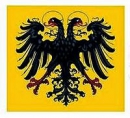
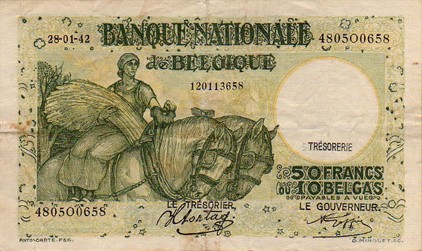

 del.icio.us
del.icio.us
 Digg
Digg

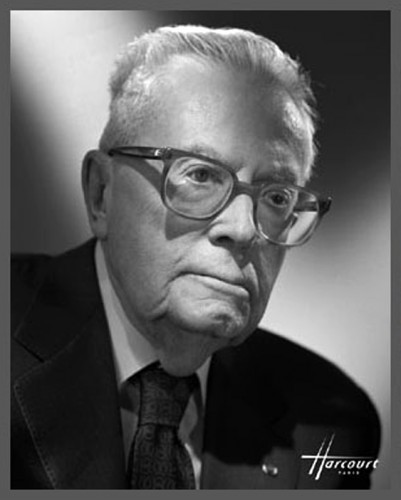
 « A propos du plan vigipirate qui concerne les risques liés à la menace terroriste en France, le ministère de l’intérieur, de l’outre-mer et des collectivités territoriales rappelle que la France est actuellement au niveau d’alerte "rouge". »
« A propos du plan vigipirate qui concerne les risques liés à la menace terroriste en France, le ministère de l’intérieur, de l’outre-mer et des collectivités territoriales rappelle que la France est actuellement au niveau d’alerte "rouge". »
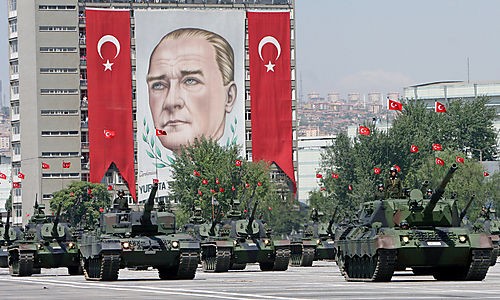


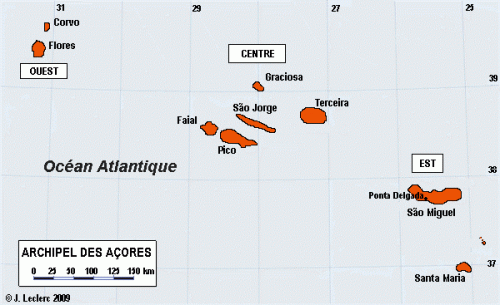

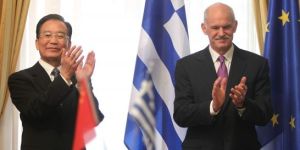


 According to the late Donald J. Harlow, director of the Esperanto League of North America (ELNA), Edgar de Wahl, one of the first to learn Esperanto, “became the proponent of the only modification to the language’s structure that [Esperanto founder] Zamenhof found worthy of adoption after publication of the First Book.” However, Wahl grew disenchanted with Esperanto: “it simply was not Western enough for him.”
According to the late Donald J. Harlow, director of the Esperanto League of North America (ELNA), Edgar de Wahl, one of the first to learn Esperanto, “became the proponent of the only modification to the language’s structure that [Esperanto founder] Zamenhof found worthy of adoption after publication of the First Book.” However, Wahl grew disenchanted with Esperanto: “it simply was not Western enough for him.” La vallée où se trouvent les ruines de l’antique cité grecque d’Allianoï (ouest de la Turquie) sera dans quelques semaines transformée en lac artificiel, destiné à l’irrigation de 8 000 hectares de terres agricoles. La mise en eau du barrage de Yortanli, dont la construction s’est achevée en 2007, vient en effet d’être programmée pour la fin de l’année. Une décision qui sème la consternation dans la communauté scientifique.
La vallée où se trouvent les ruines de l’antique cité grecque d’Allianoï (ouest de la Turquie) sera dans quelques semaines transformée en lac artificiel, destiné à l’irrigation de 8 000 hectares de terres agricoles. La mise en eau du barrage de Yortanli, dont la construction s’est achevée en 2007, vient en effet d’être programmée pour la fin de l’année. Une décision qui sème la consternation dans la communauté scientifique.

Mark Hackard
Mark Hackard has a a BA in Russian from Georgetown University and an MA in Russian, East European, and Eurasian Studies from Stanford University.